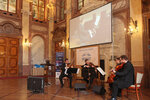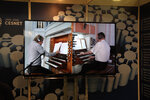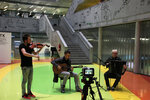Cross-border Collaboration for European Classical Music
Classical music is an important part of Europe’s intangible cultural heritage. Musical knowledge, experience and artistic interpretation are passed from generation to generation by teachers, students and artists. Communication between musicians across Europe is therefore of great ...
Read more
Project details
Description:
Classical music is an important part of Europe’s intangible cultural heritage. Musical knowledge, experience and artistic interpretation are passed from generation to generation by teachers, students and artists. Communication between musicians across Europe is therefore of great importance for the preservation of this heritage, for sharing different views and for enriching musical experience. The technology developed by the CESNET Association allows musicians to play together over long distances with just a few milliseconds delay. The technology brings new possibilities to classical music promotion, collaboration, education and interpretation. It provides more options for European collaboration among artists, teachers and students, and supports novel modes of cultural exchange between countries. Examples of how the technology could be used include enabling long-distance, live examinations for students, or easier exchange of knowledge between musical academies with expertise in particular areas. The solution is based on a very-low-added-latency network transmission technology for audio and video that uses Field Programmable Gate Arrays (FPGAs). The low latency is combined with high-definition television image quality, including possibilities for live video switching from multiple cameras. The technology provides both an environment for musicians to play together across distances and spectacular video and audio quality for audiences to enjoy. Over the past several years, many unique musical performances have been carried out using the technology across different cities and countries. Musicians and dancers in two or more countries were able to perform together for an audience, which could also be located in multiple cities. This musical exchange by artists from different environments and ensembles helps to promote the tradition of European classical music across distances and borders.













